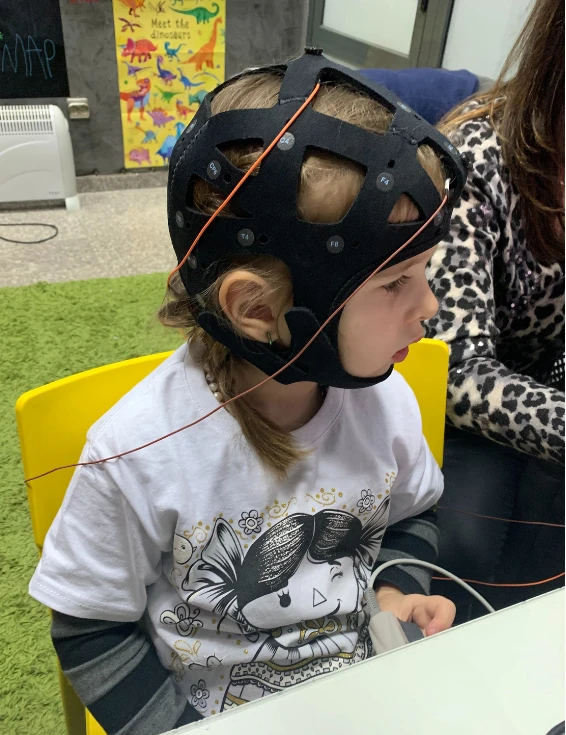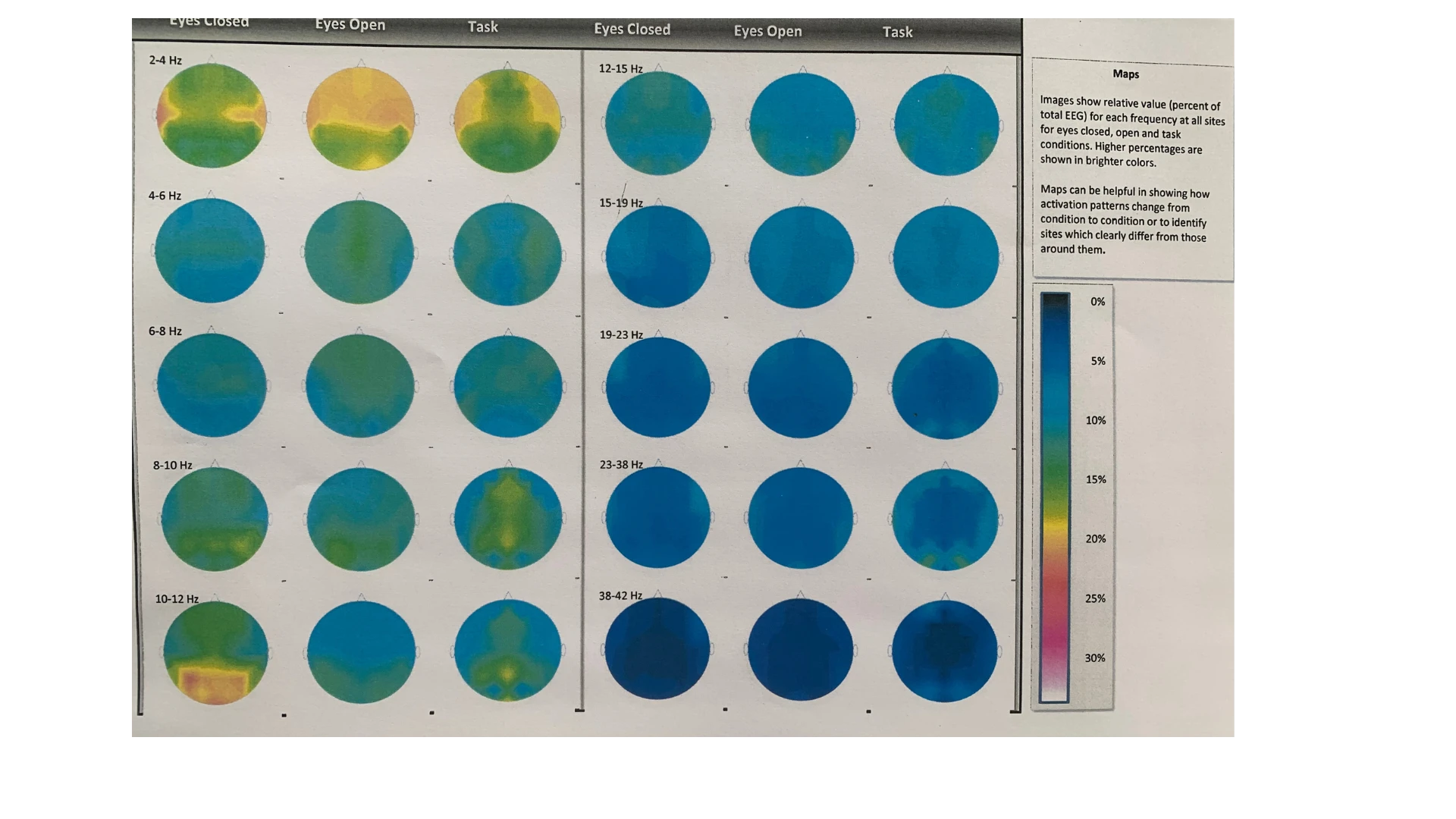
The EEG (electroencephalograph) measures brainwaves at various frequencies within the brain. A frequency is the number of times a wave repeats itself in one second.
Neurofeedback (NF) is a self-regulation technique in which current EEG parameters recorded from the clients' heads are presented to them via visual, auditory, or tactile modality, with the expectation that they will change these parameters voluntarily or involuntarily to achieve a more efficient functional patterns.
Each of the brain wave patterns has its own strenghts and limitations. Although slow waves are associated with creativity and intuition, being stuck in slow wave patterns may result in concentration or learning problems, as well as depression.
Fast frequencies, on the other hand, are associated with logical/rational thinking, such as analysing words and using steps and sequences. However, being locked in the fast wave activity can lead to obsessive, compulsive, or addictive behaviours, or a person may experience constant anxiety. Middle speeds , also known as pure awareness states are extremely important. They include peak states in sports or performance, the ability to do tasks on autopilot, mental calm, bodily relaxation, and being present in the moment. However, being trapped in those states, may cause drifting through responsibilities and appear unmotivated. Often we create energy "habits" and become trapped at a specific rhythm. We live with both its advantages and disadvantages.
Ideally, we want our brains to be able to quickly and effortlessly transition between slow to fast states and stay in each for as long as needed. This is what neurofeedback is about. Brain training can soothe an overly stimulated brain, activate an inactive one, improve internal communication, and release subconscious material via modifying patterns and connectivity.

In my neurofeedback practice I use the Brain-Trainer System (https://brain-trainer.com/). It is based on the idea that the most effective EEG training adjusts what the brain is already doing.


